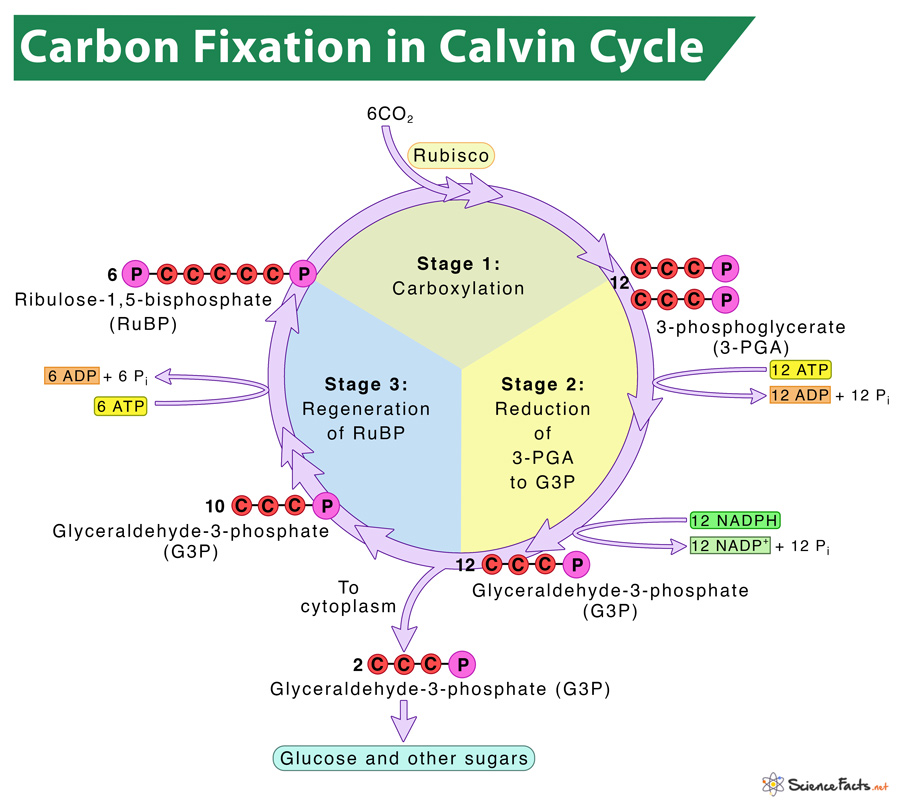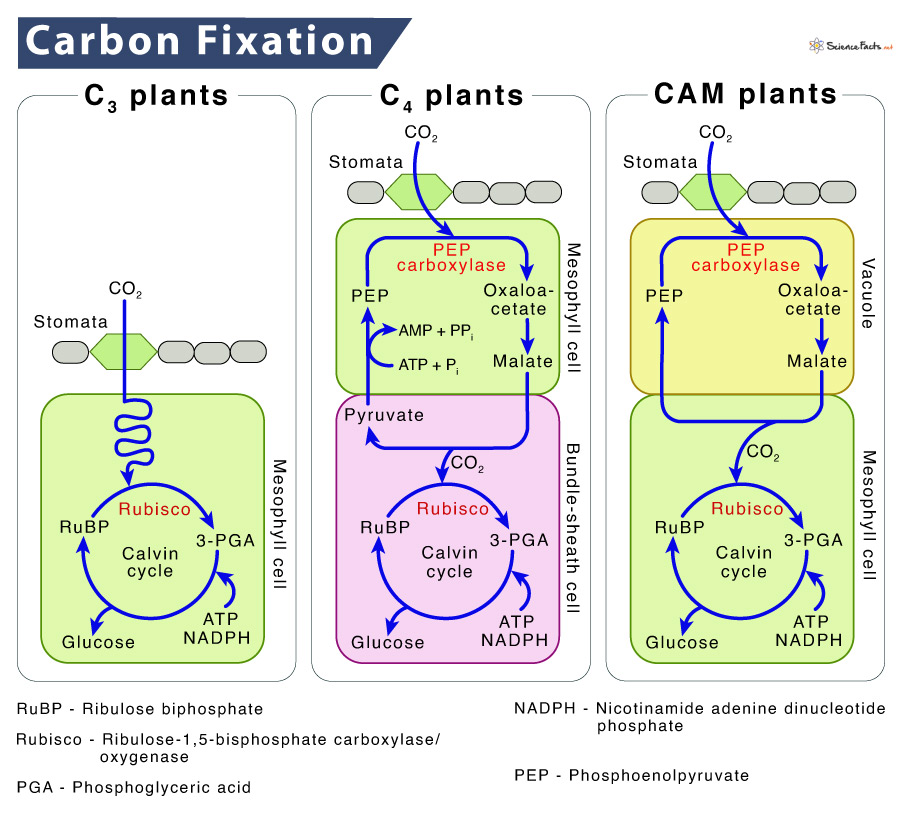It is a light-independent process, similar to photosynthesis taking place in the dark. All the autotrophs, algae, bacteria, and plants fix CO2 primarily by photosynthesis. However, some organisms also use chemosynthesis in the absence of sunlight.
Where Does It Occur
Why is Carbon Fixation Important
What Happens During the Process
Why There Are Different Types of Carbon Fixation in Plants
The balance between carbon fixation during photosynthesis and the release of CO2 during respiration affects overall plant growth. In nature, this balance also affects the global carbon cycle. The rising CO2 in the atmosphere from human input, leading to global warming, is a concern these days. A new study says plants can allocate more carbon for growth under warmer conditions, which effectively improves their net carbon gain. By utilizing more carbon for growth, plants are fixing more CO2 from the atmosphere. Thus, it helps in reducing the atmospheric CO2, maintaining a healthy O2-CO2 ratio.
The Calvin Cycle
In C3 plants, carbon fixation takes place in the light-independent or dark reaction of photosynthesis. It is alternatively known as the Calvin Cycle. It occurs in all types of plants, including C3, C4, CAM, or any other. It takes place in the stroma of chloroplasts. The first product of CO2 fixation is a 3-carbon compound known as 3-phosphoglyceric acid or PGA. In contrast, a 5-carbon compound, Ribulose biphosphate or RuBP, accepts CO2. So, carbon fixation involves the addition of carbon dioxide to RuBP. The three critical steps of the Calvin cycle are as follows: One glucose molecule requires six cycle repetitions. Hence, 6CO2, 12NADPH, and 18ATP are utilized in 6 cycles to form one glucose molecule.
Alternative Pathways of Carbon Fixation
Now, let us discuss some other methods of carbon fixation in plants found in dry, tropical conditions and arid, desert conditions.
Carbon Fixation in C4 Plants
Plants found in a dry tropical region, such as maize and sorghum, adapt the C4 pathway of carbon fixation. In these plants, the light-dependent reactions and the Calvin cycle are separated physically. Here, the light-dependent reactions occur in the mesophyll cells, and the Calvin cycle occurs in bundle-sheath cells. C3 and C4 pathways differ in their first formed product of carbon fixation. As mentioned, a 3- carbon compound, 3-phosphoglyceric acid (PGA), is produced as the first product in C3 plants. In contrast, a 4-carbon compound, oxaloacetic acid (OAA), is produced in C4 plants. The leaves of C4 plants exhibit a unique structure called Kranz anatomy to tolerate high temperatures. In these plants, the mesophyll cells cluster around the bundle-sheath, forming a wreath, where the carbon fixation occurs. Here, the CO2 acceptor is the 3-carbon compound phosphoenolpyruvate (PEP). The steps of carbon fixation in C4 plants are as follows:
Initially, atmospheric CO2 gets fixed in the mesophyll cells to form 4-carbon organic acid oxaloacetate (OAA). As the mesophyll cells lack RuBisCO, this step is carried out by PEP carboxylase, which does not tend to bind O2.Oxaloacetate gets converted into 4C acids like malic acid and aspartic acid, transported into bundle sheath cells, breaking down by decarboxylation and releasing a CO2 molecule. This CO2 is then fixed by rubisco and convert into sugar via the Calvin cycle, as in C3 photosynthesis.The remaining 3-carbon acid is transported back to mesophyll cells by expending ATP.However, as the mesophyll cells constantly pump CO2 into their neighboring bundle-sheath cells in the form of malate, a high concentration of CO2 always prevails around rubisco, thus minimizing photorespiration.
Carbon Fixation in CAM Plants
Some plants belonging to the family Crassulaceae, such as cacti and pineapples, use the crassulacean acid metabolism (CAM) pathway to minimize photorespiration. CAM plants are dominant in scorching, dry areas, like deserts. Unlike the Calvin cycle, it separates the light-dependent reactions and the use of CO2 in time.
At night, these plants open their stomata, allowing CO2 to diffuse into the leaves. The diffused CO2 then gets fixed into oxaloacetate by PEP carboxylase, which is then converted to malate or any other type of organic acid.The organic acid remains stored inside vacuoles until the next day. During the day, the CAM plants do not open their stomata. However, they can continue photosynthesis since the stored organic acids are transported out of the vacuole and broken down to release CO2. The CO2 then enters the Calvin cycle carrying the process further. This controlled release of organic acids maintains a high concentration of CO2 around rubisco.Unlike C4 photosynthesis, the CAM pathway requires ATP at multiple steps.
However, CAM photosynthesis not only helps to avoid photorespiration but is also very water-efficient. In this process, the stomata only open at night, when humidity tends to be higher and the temperature is cooler, both factors that reduce water loss from leaves. Plants living in arid regions need to conserve water, while plants living in more moist conditions will not need to do so. Different plants have adapted modified methods of carbon fixation to help maximize their efficiency irrespective of whatever region they belong to. Most of these adaptive methods are C₃, C₄, and CAM.

